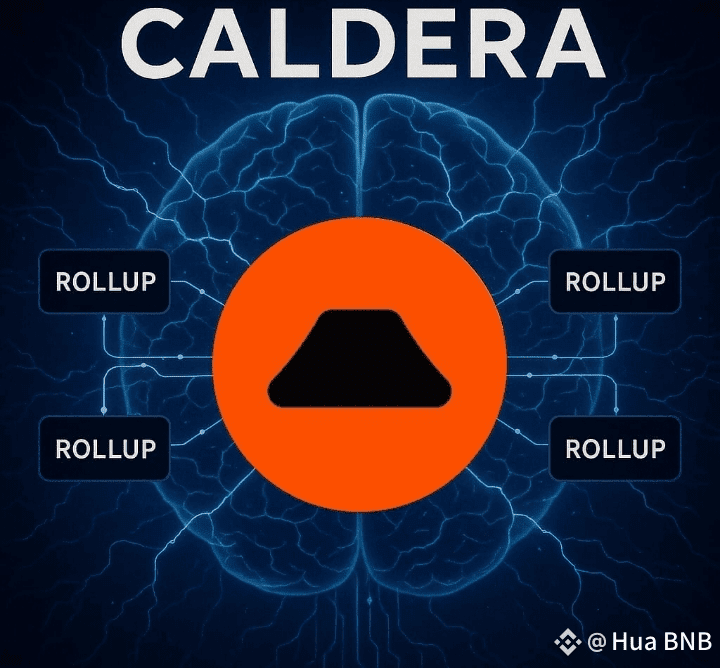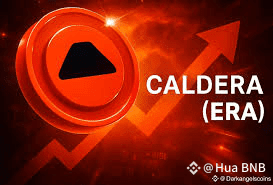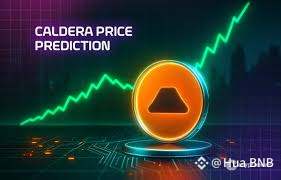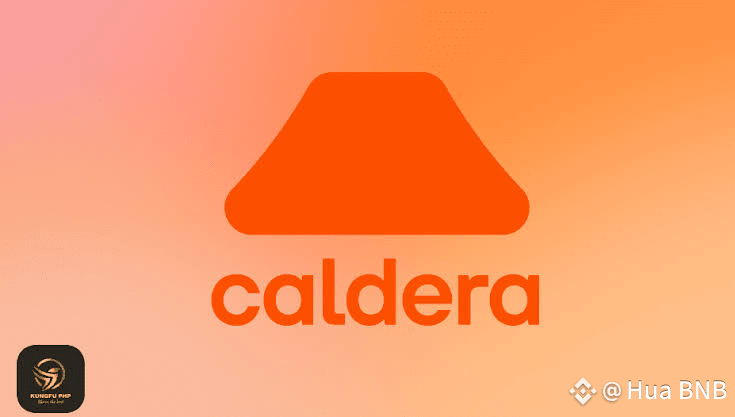The cryptocurrency industry continues to evolve with groundbreaking projects reshaping the future of decentralized ecosystems. One such innovation making headlines is #Caldera (ERA) — a dynamic infrastructure platform that has garnered attention with its recent launch on the Ethereum network. This move signals a significant leap forward for scalable blockchain development and introduces a new layer of opportunities for developers, traders, and investors.

Let’s dive deep into what makes Caldera ($ERA ) unique, its significance as an ERC-20 token, and how this integration is poised to impact the Ethereum ecosystem and the broader crypto landscape.
Understanding Caldera (ERA): Powering the Next Wave of Custom Blockchains
Caldera is not just another token. It’s a comprehensive blockchain infrastructure solution designed to simplify the creation and management of custom blockchains, often referred to as rollups or appchains. These chains are purpose-built to alleviate the scalability constraints that plague major layer-1 networks like Ethereum.

Caldera provides a streamlined framework for developers to launch application-specific blockchains with greater control, faster throughput, and lower fees — without compromising on decentralization or security.
Core Features of the Caldera Ecosystem:
Appchain Deployment: Enables developers to quickly launch optimized rollups tailored to specific decentralized applications.
Customization: Offers flexibility in choosing execution environments, consensus models, and governance mechanisms.
Scalability & Speed: Reduces congestion on Ethereum by offloading transactions onto independent, high-performance chains.

The Role of ERA Token in the Caldera Ecosystem
The ERA token serves as the backbone of the Caldera ecosystem. As a utility and governance token, it plays multiple roles essential to maintaining a secure, community-driven, and functional network.

Key Utilities of ERA:
1. Governance: Token holders can vote on protocol upgrades, network policies, and treasury decisions, promoting decentralized decision-making.
2. Staking: ERA may be used to secure the network or support validators within appchains, potentially earning holders staking rewards.
3. Fee Settlement: Used for paying transaction fees or service costs across appchains built on the Caldera platform.

The introduction of ERA as an ERC-20 token makes it immediately compatible with the Ethereum ecosystem, which leads us to the next significant aspect of this development.
Why ERC-20 Integration is a Strategic Win
Deploying ERA as an ERC-20 token is a strategic decision that brings multiple benefits — both for developers and users. ERC-20 is the most widely used token standard on Ethereum, enabling seamless compatibility with wallets, smart contracts, and DeFi applications.
 Benefits of ERC-20 Compatibility:
Benefits of ERC-20 Compatibility:
Interoperability: ERA can interact with thousands of existing dApps and protocols within the Ethereum ecosystem.
Security: ERC-20 is a well-established standard with a proven track record, reducing risk and ensuring reliability.
Liquidity Access: By being ERC-20 compliant, ERA can tap into the vast liquidity pools of Ethereum-based platforms.
Ease of Use: Supported by almost all major crypto wallets and decentralized exchanges, making user onboarding smooth and frictionless.
This compatibility amplifies the reach of ERA, positioning it for wide adoption and usage.
Caldera’s Impact on the Ethereum Network
Although Caldera aims to offload transaction processing from Ethereum, its alignment with Ethereum’s Layer 2 vision supports the broader health and expansion of the Ethereum ecosystem.
Ripple Effects on Ethereum:
Increased On-Chain Activity: More users interacting with ERA means higher transaction volume, driving demand for ETH as gas.
Scalability Reinforcement: Caldera’s appchains reduce congestion, allowing Ethereum to scale without sacrificing decentralization.
Developer Confidence: Projects like Caldera showcase the viability of Ethereum as a launchpad for scalable, modular blockchain solutions.
Innovation Catalyst: Encourages developers to build dApps that are efficient, fast, and user-centric.

Caldera’s infrastructure plays a complementary role to Ethereum, bolstering its value proposition as the go-to Layer 1 network for decentralized innovation.
Navigating ERA as a Trader or Investor: What You Should Know
With ERA now accessible on the Ethereum network, crypto traders and investors are presented with a new asset that holds long-term promise. However, as with any new listing, understanding market dynamics is crucial for successful engagement.

What to Expect in Early Trading:
High Volatility: Expect initial price swings as the market adjusts to supply and demand dynamics.
Liquidity Fluctuations: Trading activity may start thin and deepen over time as more participants join in.
Speculative Interest: Early movements may be driven by hype or momentum trading before settling into real value.
Token Pairings: ERA is likely to be paired with ETH, stablecoins, or other major assets on decentralized platforms.
Investors should tread carefully, using tested risk management strategies and informed decision-making to navigate the early stages of ERA’s price discovery.
Actionable Tips for Engaging with ERA
For those looking to engage with the Caldera ecosystem or invest in the ERA token, here are practical steps to consider:
1. Do Your Homework
Read the official whitepaper, evaluate the team’s background, and explore community forums to understand the project's fundamentals.
2. Start Small and Scale
Begin with a modest investment and use dollar-cost averaging (DCA) to mitigate volatility exposure.
3. Set Clear Boundaries
Use stop-loss and take-profit orders to manage risk and protect gains in a volatile market.
4. Stay Updated
Follow reputable crypto media and Caldera’s official communication channels for the latest news, roadmap updates, and ecosystem developments.
5. Explore the Use Cases
Look beyond price speculation. Consider how Caldera’s infrastructure could support new dApps, NFT platforms, or DeFi protocols.

Final Thoughts: Caldera and the Future of Appchain Innovation
The launch of Caldera (ERA) on the Ethereum network represents more than just another token release — it’s a pivotal step toward the future of customizable, scalable blockchain architecture. As decentralized applications continue to demand higher performance, solutions like Caldera pave the way for specialized, user-centric networks without abandoning the security and trust of Ethereum.
While short-term price movements may generate buzz, the real value lies in Caldera’s potential to empower the next generation of developers and bring efficient, scalable solutions to life. ERA's entry into the Ethereum ecosystem is a signal of progress — and perhaps the start of a new era in Web3 innovation.
#Caldera @Caldera Official $ERA

